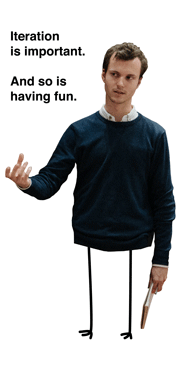base this off of Zumthor's statement, but don't mention him. Make this an opinion piece more than anything. show my own examples of sketches that can talk to all of this.
Main points:
- project phases. everything starts with a sketch.
- working on different scale. yes, there are going to be projects that are at the scale of nearly a million square feet - and I have worked on projects of that sort (really drill in my own experience into all of this. BUT more importantly, you will draw the project at different scales.
- how a sketch gets translated through different scales, definition of elements gets improved, and even work flow and attitude differs. Basically: HOW DOES A DESIGNER THINK??
- include some artwork, idk if I need to be as cliche as including some stuff from picasso. but maybe? definitely from frantisek kupka. basically show that it isn't necessary to have a full render in order to get the point across. a simple, thoughtful and well done sketch will do the same and more.
- LACK OF DEFINITION = STIMULATING THOUGHTS. think about it. when you have an overly realistic image of a fruit, there's no escape to the single deduction: it is in fact an orange (or whatever other fruit I find a painting of). If it is a sketch, it can always be free of assumptions, and it can actually stimulate new thoughts, discussions and decisions which can ultimately be productive for the project itself.
- actual rendering critique: yes, it is possible to get just renderings out, but show my own skteches and how those also inform the viewer in new ways that maybe wouldn't have happened with realistic renderings.
- final renderings. this can be productive to try and sell the client the closest digital rendition of the final product. At a scale of say.. an Iphone, or even furniture (include both iphone and furniture renderings from Ikea), this is more than possible and actually looks even better, it is cleaner and represents less work - this is also because most of furniture is an object that is by definition going to be photographed and documented in a studio (we expect it to be documented and photographed that way). However, Architecture is an entirely different animal. It is done at a scale that is difficult to "fake" in the digital world. Erosion of materials caused by rain, extensive sunlight, and frankly time, is going to be impossible to "fake" perfectly. Approximating lighting, but most importantly materiality of expected new construction, is extremely difficult, as light in rendering engines is mostly fake, unrealistic and not able to duplicate how a material will look in real life. It is easy to render a sexy image of a building, but it is impossible to of course replace an actual picture with it. To that extent it might be interesting for the client, but is it perhaps even more productive and interesting to just see a sketch? and have a separate place with a material board....?
anyways, ton be continued. this is clearly trying to create a discussion, rather than provide a definitive statement.
Everything starts with a sketch. From actual sketches, to an outline for a quick essay, the need to brainstorm ideas is omnipresent.

